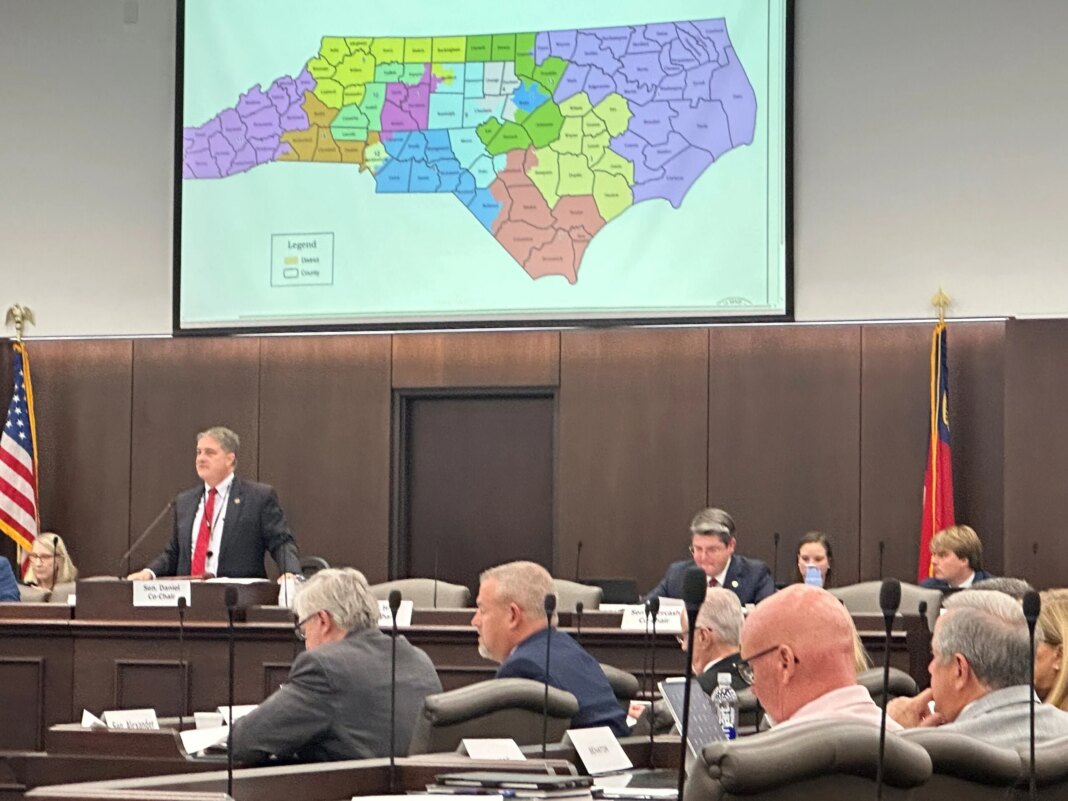The Shift in Redistricting: A Political Power Play
In the ever-evolving landscape of American politics, the stakes are continually reshaped by redistricting—the process of redrawing congressional districts. Recently, former President Donald Trump beckoned for Republicans to redraw U.S. House districts in an effort to bolster the party’s chances in the upcoming elections. This unusual call has sparked mid-decade gerrymandering efforts across both Republican- and Democratic-led states, intensifying the competition as parties jostle for critical seats.
Why Redistricting Matters
Midterm elections often serve as reflection points for the sitting president’s party. Historically, these elections have seen the president’s party lose seats, creating a natural incentive to alter district maps to improve chances of retaining control. Democrats, needing only three seats to flip the House, are particularly aware of these dynamics. Trump’s push for a redraw seeks to counteract these historical trends and secure advantages for Republicans.
States Taking Action
States across the U.S. are making significant moves, whether proactively redrawing maps or preparing for the possibility of changes.
Texas: A Republican Stronghold
Texas was the first to respond to Trump’s urging, with Republican Governor Greg Abbott signing a new U.S. House map into law on August 29. This newly adopted map is projected to help Republicans gain five additional seats, which would enhance their current hold of 25 out of 38 seats. However, the legality of the new map is now under challenge, raising questions about its future.
California: The Democratic Counter
In a striking response, California emerged as the first Democratic-led state to counteract Trump’s redistricting push. The state legislature approved a new U.S. House map that replaces earlier districts established by an independent citizens commission. If successful, this plan could help Democrats secure five more seats, a vital addition to their current tally of 43 out of 52 seats. However, it hinges on voter approval in an upcoming election.
Missouri and North Carolina: Following Suit
Missouri and North Carolina followed Texas’s lead, both enacting new maps under Republican governance that aim to strengthen GOP representation. Missouri Governor Mike Kehoe signed a new map on September 28 that may redefine a Democratic-held district in Kansas City. In North Carolina, the Republican-led General Assembly quickly approved changes to bolster Republican chances in the eastern part of the state. Both maps will likely face legal challenges as opponents mobilize against them.
Ohio and Utah: Shifting Landscapes
In Ohio, a panel of predominantly Republican officials approved new U.S. House districts on October 31, aiming to elevate the GOP’s positioning in competitive seats. Meanwhile, in Utah, revised House districts emerged after a judge struck down the previously adopted congressional map. This new iteration could create more competitive opportunities for Democrats, despite Republicans currently controlling all four seats.
Legislative Moves From Other States
Several states are beginning to take steps toward their own rounds of congressional redistricting.
Louisiana: Delayed Primaries
In Louisiana, a new law delays the state’s primary elections to give lawmakers additional time to reconsider congressional districts. This delay may provide a crucial buffer should the Supreme Court change the landscape of current maps, with Republicans holding four of the six seats.
Virginia and Indiana: Proposed Changes
Virginia’s Democratic-led General Assembly is exploring a constitutional amendment to allow mid-decade redistricting, which would require another round of legislative approval. In Indiana, Republican Governor Mike Braun called for a special legislative session in November to discuss congressional redistricting—a move reflecting high stakes with Republicans currently holding seven of nine seats.
Broader Conversations Around Redistricting
Not all states are moving decisively toward redistricting, but the discussions are amplifying.
Colorado and Florida: Potential Shifts
In Colorado, Democratic Attorney General Phil Weiser has expressed support for a constitutional amendment to allow mid-decade redistricting, which would require statewide ballot measures. In Florida, Republican lawmakers are forming a special committee to scrutinize congressional district lines further, with the GOP currently holding a significant majority of the seats.
Illinois and Beyond
Illinois has seen calls from the Democratic Congressional Campaign Committee for a redraw of districts, while discussions in Maryland are more subdued, with some Democratic lawmakers proposing legislation but lacking strong momentum. Meanwhile, New York legislators have filed a proposed constitutional amendment for mid-decade redistricting, indicating that the conversation is far from over.
Conclusion
As states navigate the complex terrain of partisan interests and electoral strategies, the future of congressional representation may hang in the balance. With both parties maneuvering through legislative changes and legal challenges, the upcoming elections promise to be a battleground influenced by these critical redistributions of power. The reverberations of these gerrymandering strategies will be felt across the political spectrum as each party seeks to cement its influence in the House of Representatives.



